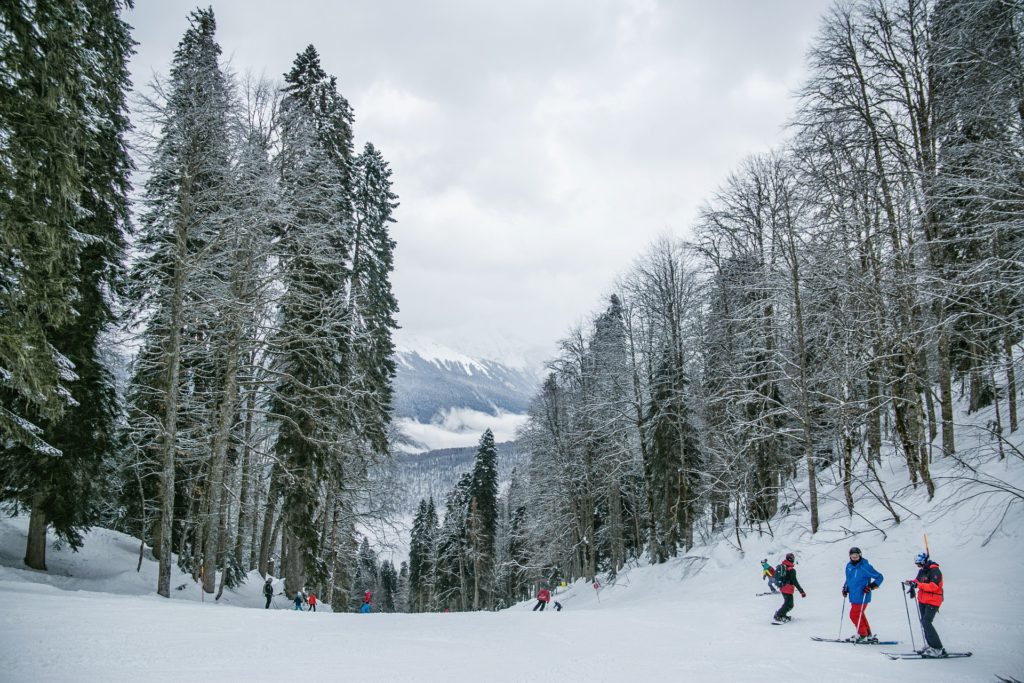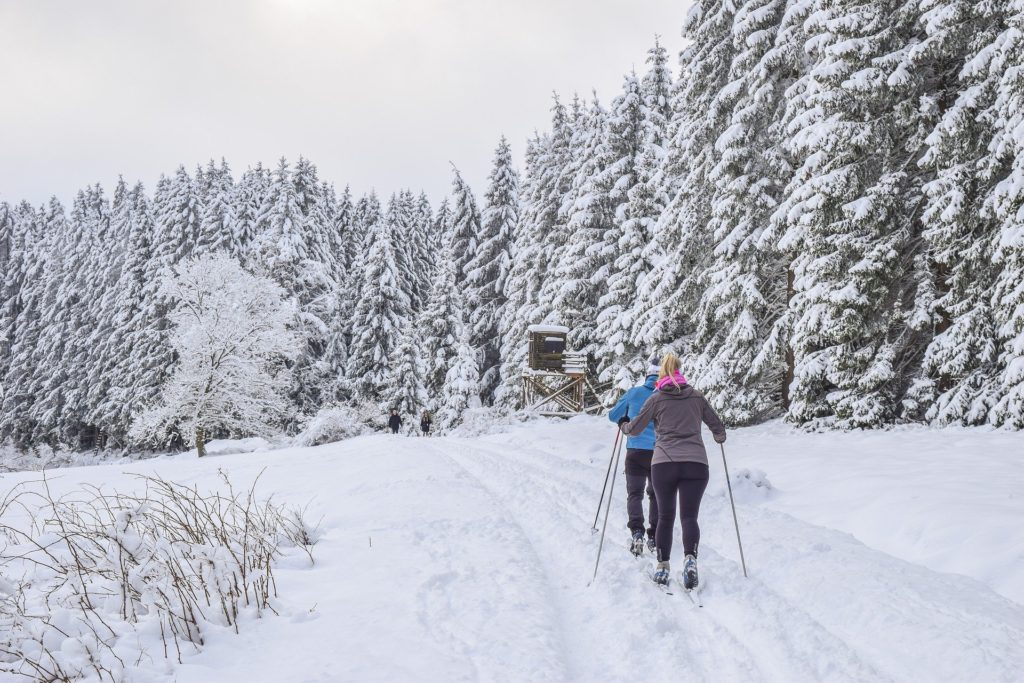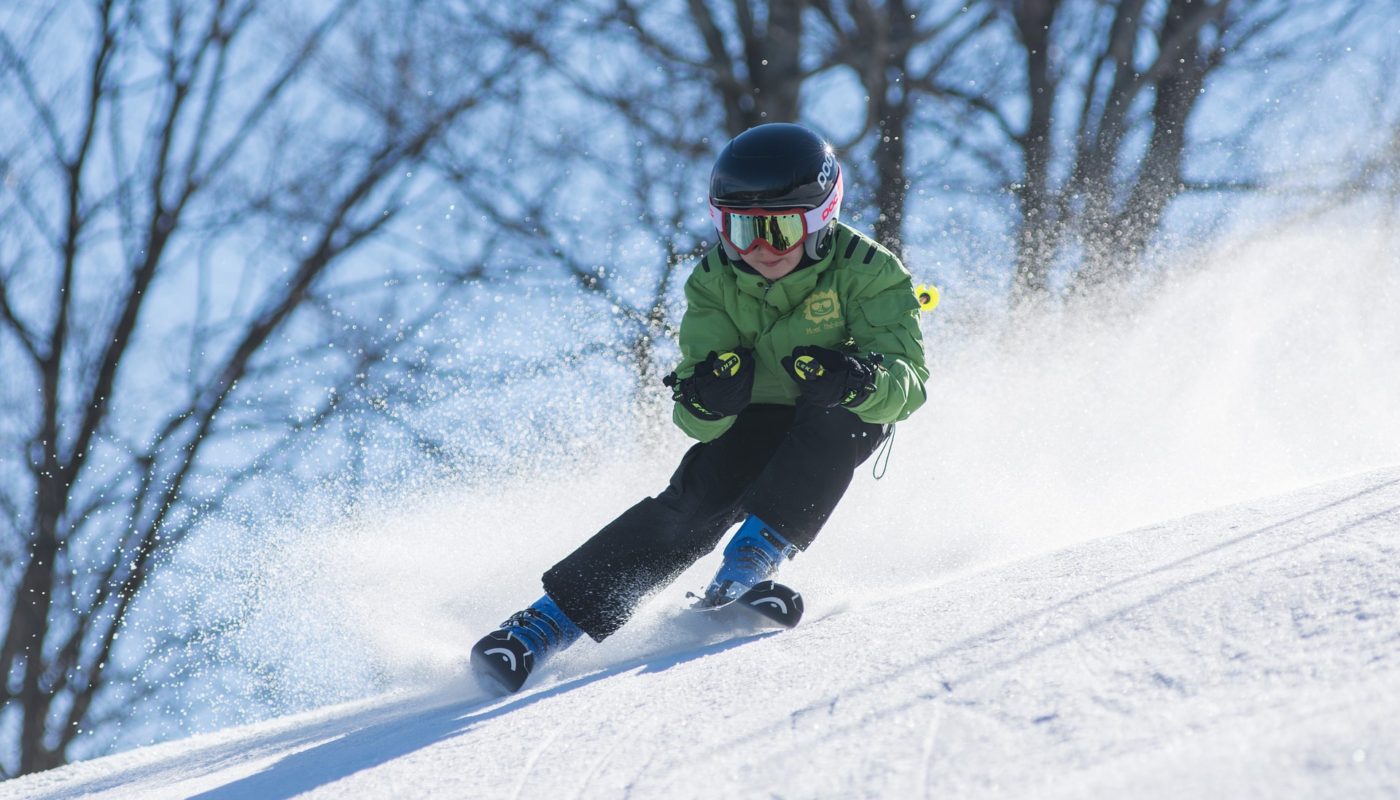Skiing is an intriguing hobby for adrenaline-seekers, nature-lovers, fitness enthusiasts, and anyone in between. Snow skiing is a hobby that you can really make what you want of it: you can work your way up to powering down treacherous slopes covered in moguls or you pick easy-going trails that allow you to take it all in and enjoy the ride.
However, regardless of the level you would like to work up to, skiing as a hobby can appear quite intimidating as it comes with a lot of new gear, terminology, and weather conditions many are not used to.
Below is our guide to getting started with skiing in order to best prepare any newbie for this hobby:
Terminology

Downhill skiing or Alpine skiing: The type of skiing many people are familiar with. Downhill skiing, as its name implies, involves the skier traveling down a hill. Most downhill skiing takes place on mountains where the activity is organized by local ski resorts. There are typically chair lifts or another form of transportation in order to ride to the top and then ski down. (This is the type of skiing we will be covering in this post.)
Terms for the Slopes
- Green run (green circle on signage): The easiest runs on the mountain. They are wide, groomed, and have a slope between 6-25%.
- Blue run (blue square on signage): These runs are intermediate in their difficulty level. They are usually groomed with grades ranging from 25% to 40%. Blue runs are typically the majority of runs in most ski areas.
- Black diamond run (black diamond on signage): Considered one of the most difficult runs on the mountain. Black diamonds are steep (40% and up) and may or may not be groomed. Moguls are often present as well.
- Double black diamond (two diamonds on signage): The most difficult trail on the mountain. They are exceptionally steep with narrow trails, exposure to wind, and obstacles such as trees, steep drop-offs, icy patches, and moguls. These trails are only intended for experienced skiers.
- Grooming/ a groomed run: A large machine has flattened and smoothed the snow on the slopes. This makes it easier to ski and is usually done at night.
- Moguls: Intentional bumps on a run. They are usually on black runs and enhance the experience of advanced skiers.
- Powder: Fresh snow that hasn’t been packed down or groomed. This is usually more difficult to ski in.
- Slush: Wet snow that is melting and can be difficult to ski in. This is more common towards the end of ski season (spring).
- Packed Powder: The perfect combination of skiing conditions according to avid skiers. This is where the new snow has been groomed or packed down so the conditions are in between powered and groomed snow.
- Slope/Run/Trail: An area of snow that is designated for skiers and snowboarders that has been labeled a specific difficulty level.
Forms of Transport
- Cable Car: A large aerial lift that transports you up the slopes. Typically, you will take another lift to the top of the trail after a cable car.
- Chair Lift: An aerial ski lift that you sit on and rest your skis on a bar. This will take you to the trail you will ski down. Once you ski down your trail, you will get in this line again to go back up.
- Gondola: An aerial lift that is enclosed and is often faster than an open chairlift. For a gondola, you will need to take your skis off and hold them for the duration of the ride.
- Drag lift: This type of ski lift is typically only for beginners as it is only designed for short distances. The lift tows you along a path as you hold onto a handle (or put a small seat between your legs).
What You’ll Need
Ski Coat: Your ski coat should be water-resistant and ideally waterproof to keep you dry. For warmth, you will want a coat with durable fabric that keeps your body heat insulated and the wind out. Another tip: get a coat with a lot of pockets as skiers always need somewhere to put their phone, hand warmers, face mask, gloves, ski pass, and even a snack whether you’re resting at a lodge or skiing down the mountain.
Ski Pants: Your ski pants should also be water-resistant or waterproof to avoid getting cold and wet. For beginner skiers, waterproof pants are going to be best as everyone falls and spends their fair time in the snow their first couple tries.
Thermal Top and Pants: This is the layer of clothing under your ski coat and pants. To stay warm, it is important to have a thermal top and pants that lock the heat in. The stretchy material is comfortable, prevents chafing, and is breathable. If you’re looking to save money on ski gear, you can repurpose a pair of leg-hugging yoga pants for your thermal bottoms. However, if you are prone to getting cold, it is recommended to invest in a high-quality thermal top and pants.
Ski Socks: A significant amount of body heat loss occurs through the feet, so it is important to have quality, insulated socks when you’re on the mountain. Additionally, it is best to use a sock that is a combination of thick but lightweight, so they do not affect the feeling of your foot in your ski boot.
Gloves/ Mittens: Waterproof gloves or mittens are essential for braving the mountain cold. Whether you choose gloves or mittens should be based on your personal preference: some like to be able to access their pockets easily and have more dexterity with gloves while others prefer the warmth of mittens that keep their fingers together.
Helmet: Safety first! Helmets are strongly recommended for all skiers and some mountains even make them required for all ages. All experience levels should wear helmets but any beginner needs to wear a helmet as they get the hang of the sport. Additionally, helmets are a great way to keep your head warm as hats do not keep the wind out as well as a helmet does. You can rent a helmet at most rental stores on the mountain, but for comfort and ease, it is advisable to bring your own.
Goggles: Because of the wind, snow, sun, and other elements when skiing, goggles are vital for visibility when skiing down the mountain.
Face mask: A face mask prevents windburn and in the spring, an awkward ski tan from your goggles. Some face masks have holes for your nose and mouth area for breathing or ones that keep you completely covered. They’re not very expensive and can be used in other cold weather activities other than skiing. (Don’t rob any banks, though!)
Hand warmers: Hand warmers are definitely optional but are often carried by avid skiers. You can tuck them into your gloves or mittens to keep your hands warm and they make the world of difference. You can also put them in your boots to warm your feet up or buy special foot warmers that stick to the bottom of your sock.
Skis, boots, and poles: Skis, boots, and poles are arguably the most important parts of your ski gear. However, for beginners (especially children), it is best to rent this equipment from the local rental store. Skis are a big investment and it is recommended to figure out what style of ski you like and if skiing is the hobby for you before making the purchase (the same goes for boots and poles).
amzn_assoc_placement = “adunit0”; amzn_assoc_search_bar = “false”; amzn_assoc_tracking_id = “egbdf00-20”; amzn_assoc_ad_mode = “manual”; amzn_assoc_ad_type = “smart”; amzn_assoc_marketplace = “amazon”; amzn_assoc_region = “US”; amzn_assoc_title = “”; amzn_assoc_linkid = “6a7e036d606fd5192a2b8dd4a130e077”; amzn_assoc_asins = “B07W7DB4PQ,B077GQQQPS,B07ZRTCMLN,B07717DGBC”;Tips Before You Hit the Trail

Get a Lesson
Because downhill skiing typically involves more speed than other styles, it is best to get at least one lesson in before you brave the mountain on your own. It is definitely worth it as it is the fastest way to understand the technique and the safest ways to fall (because we all do from time to time).
Go Slow and Practice Patience
Those who try their hand at downhill skiing often expect to be whipping down the mountain in the first couple of runs. However, developing skills takes time and it is important to stay in control of your speed for your safety and the safety of others. As long as you stay patient and dedicated to improving, you will look like a pro in no time.
Bend Your Knees
The thing that is stressed the most in downhill skiing is bending your knees. Stay in this athletic stance gives you have more power and control over your movements and turns. This is because bending your knees forces you to shove your shins into the front of the boot, gaining control of your ski. Additionally, it centers your upper body over your legs, keeping your balance.
Bring a Snack
Nourishing your body is important for any sport and a simple power bar in your coat pocket can be the world of difference on a ski trail. No one wants to be cold and hungry so it is always best to be prepared.
Try Snowboarding!
If you give skiing a try and find it’s not for you, why not try snowboarding? While the two sports seem very similar, the mechanics of them are entirely different. If you take up snowboarding and find it’s more to your liking then you can still have a fun time on ski trips with family and friends since you won’t have to stay at home or sit inside a cabin. You can grab your board and hit the powder with them!

